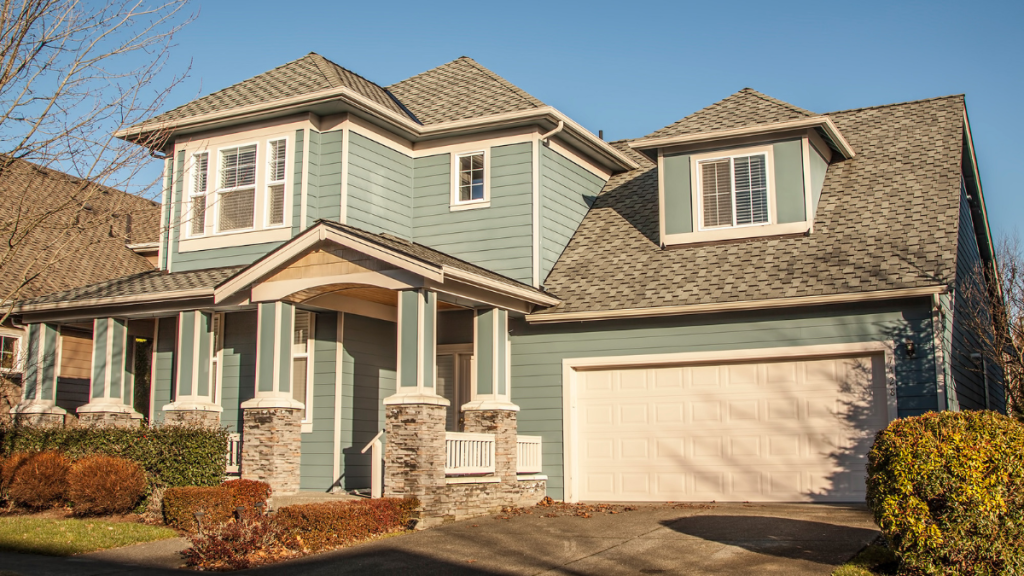The roof is the most critical component of any home, serving as its primary shield against the elements. The type of roofing material has a significant impact on a home’s aesthetic appeal, energy efficiency, longevity, and overall value. With a variety of options available, choosing the right roof involves understanding the unique characteristics, benefits, and considerations of each material. Whether you’re building a new home, replacing an old roof, or simply curious, knowing the different types of roofing can empower you to make informed decisions.
1. Asphalt Shingles
Asphalt shingles are by far the most popular roofing material in North America and many other parts of the world, primarily due to their affordability, ease of installation, and versatility. They are made from a fibreglass mat coated with asphalt and ceramic granules.
Available in a vast array of colours and styles, including 3-tab (flat appearance) and architectural/laminate (dimensional, mimicking the look of wood or slate). They are relatively lightweight and durable, typically lasting 20 to 30 years. Asphalt shingles offer good fire resistance and decent wind resistance, making them a balanced choice for many climates. Their widespread use also means repair and replacement services are readily available, so you don’t have to worry about taking time off your gaming session at https://www.casinous.com/no-deposit-bonus/ for some roof repair.
2. Metal Roofing
Metal roofing has gained significant popularity for its exceptional durability, longevity, and energy efficiency. Made from materials like steel, aluminium, copper, or zinc, metal roofs can come in various forms, including standing seam panels, shingles, or tiles.
Metal roofs can last 40-70 years or more, making them a long-term investment. They are highly resistant to fire, rot, insects, and extreme weather conditions, such as high winds and hail. Many metal roofs are energy-efficient due to their ability to reflect solar radiant heat, thereby reducing cooling costs. While typically more expensive upfront than asphalt, their extended lifespan and energy savings often make the investment worthwhile.
3. Tile Roofing (Clay and Concrete)
Tile roofing, primarily made from clay or concrete, offers a distinctive aesthetic appeal that evokes Mediterranean, Spanish, or Southwestern architectural styles. Both materials are known for their robustness and longevity.
Clay tiles are renowned for their natural beauty, rich colours, and exceptional durability, often lasting 50-100 years. Concrete tiles mimic the appearance of clay, wood shakes, or slate at a lower cost and are also very durable (30-50 years). Both types offer excellent fire resistance, good insulation properties, and stand up well to harsh weather. Their weight often requires additional structural support, which is a consideration during installation.
4. Wood Shakes and Shingles
Wood shakes and shingles provide a classic, rustic, and natural look that blends beautifully with many traditional and contemporary home designs. Shakes are typically thicker and more irregular, while shingles are sawn for a more uniform appearance.
Usually made from cedar, redwood, or cypress, wood roofs offer a natural aesthetic that weathers beautifully over time. They provide sound insulation, which contributes to improved energy efficiency. Their lifespan can range from 20-40 years, depending on climate, quality of wood, and maintenance. However, they require more maintenance than other materials, are less fire-resistant (unless treated), and can be susceptible to moss, mould, and insects in damp environments.
5. Slate Roofing
Slate roofing is considered one of the most premium and durable roofing materials available, celebrated for its exquisite natural beauty, unique variations in colour and texture, and virtually unmatched lifespan.
Natural slate is a finely grained, metamorphic rock that is incredibly dense and waterproof. A properly installed slate roof can last 75-200 years or even longer, often outliving the house it covers. It is highly resistant to fire, rot, insects, and extreme weather. While its aesthetic appeal and longevity are unparalleled, slate is hefty, requiring substantial structural support, and its material and installation costs are significantly higher than other options, making it a luxury roofing choice.
6. Rubber Roofing (EPDM)
While less common for traditional pitched residential homes, rubber roofing, specifically EPDM (Ethylene Propylene Diene Monomer), is an extremely popular and effective solution for flat or very low-slope roofs.
EPDM is a durable synthetic rubber roofing membrane that is lightweight, flexible, and highly resistant to UV radiation and extreme temperatures. It’s relatively easy to install and repair, making it a cost-effective option for flat roofs found on some modern homes, garages, or extensions. EPDM roofs typically last 20-30 years, providing excellent waterproofing and minimal maintenance, making them ideal for specific architectural designs.




